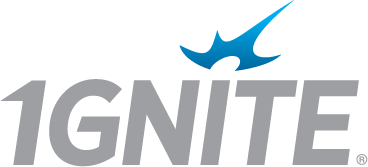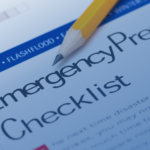Retail ReCommerce Program
5 Ways To Build A Strong ReCommerce ProgramReCommerce is booming, which stresses the supply chain. Many retail companies are doing their very best to address the exponential volume of returned goods but are missing the opportunity to turn their ReCommerce program into a powerhouse of insight, efficiencies, and revenue streams.
Here are 5 ways to build a strong ReCommerce program, take full advantage of demand change to stay relevant with coveted target consumers, and beat the competition:
# 1: Assess Returns, Excess Inventory, and Used Capital Assets
The growth of ReCommerce sales volume processed by retailers in 2021 increased exponentially. According to a study by the Cowen research firm, predictions show that ReCommerce sales will account for 14% of the apparel, footwear, and accessories market by 2024, which is up from about 7% in 2020.
Returns and Excess Inventory
Most of the growth in the ReCommerce market is based on a new COVID-based reliance on eCommerce, and easy return policies to retain consumer loyalty. Because of these eased return policies, retailers are finding themselves in a position to find new ways to move excess inventory. Fortunately, there is a positive sentiment from Gen-Z consumers when it comes to second-hand items. A study from the First Insight research group found that 62% of millennials and Gen-Z consumers preferred to purchase from sustainable brands -including second-hand items. There is a large percentage of younger shoppers that shop second-hand items exclusively because it gives them better access to higher-end items they couldn’t afford otherwise. For retailers, utilizing their excess and returned items is an automatic ReCommerce solution just waiting to be utilized.
Used Capitol Assets
The growth of ReCommerce is not just filled with excess inventory and returned goods, it is also fueled by retail companies’ need to remodel and refresh their stores to retain current shoppers, change floor plans to address the increase in orders originating from online shopping and delivery. These projects create a large influx of materials such as fixtures, shelves, cooking equipment, refrigeration equipment, displays, and flooring that all used to be landfilled. Many of these assets can be resold commercially, re-used internally, and recycled to retain value.
To keep up with these changes in the market, retail companies must create a robust ReCommerce program that addresses all sources of goods, not only just returned goods and excess inventory. To maximize speed and impact, retail companies should look into supplementing in-house expertise by working with gifted liquidators that have a national footprint, leverage a diverse network of wholesalers/ buyers/ exporters who will buy the goods for their intended uses and have the ability to absorb a large volume of goods quickly.
# 2: Track Key Metrics So You Know How to Best Correct your Course of Action
Retailers are experts in moving inventory in one direction:
Manufacturers to Distribution centers to Stores to Consumers
To run a successful ReCommerce program, retailers need to be able to track goods coming in the other direction. For instance, in a scenario where consumers can shop online, but return goods in-store, the reverse logistics profile looks something like this:
Consumers to Retail Stores to Designated Return Centers to Distribution Centers
This flow of goods can be difficult to track. Retailers need to develop and focus on a key set of metrics to determine their daily KPIs. The metrics should include the volume and value of returned goods as a portion of goods sold, the volume and value of all returned products by disposition method, and the turn-around time to collect, segregate, repair, and resell those goods.
# 3: Select The Desired Balance Between Speed, Value, And Environmental Footprint, Then Execute Full Speed Ahead
It is impossible to build a program that maximizes speed, retained value of the goods, AND has virtually zero environmental footprints. While achieving 100% across all three parameters is not possible, retail companies must define a balance among all three driving forces that fits their individual need:
Speed/Value over Environmental Impact
The faster a company moves excess inventory, the higher value they retain, but often at the detriment of its environmental impact. By not taking the time to repair and reuse goods because of the time it takes, means those items are often landfilled.
Economic Impact over Speed/Value
By offering a program that focuses on the highest resale, reuse, and repair options, they greatly reduce their environmental impact, but it may take longer to get products to market – impacting their value.
Once a retailer has defined what balance between speed, value, and environmental impact they want to maintain, they need to be able to move forward with that plan and track their progress from day one. More importantly, they need to make sure that their ReCommerce program is in line with each other and not working against each other.
# 4: Identify Means to Not Only Gain Current Customer Loyalty but Also Create Profitable Revenue Streams That are In-Line with the Ethos of Your Brand
Many retail companies have implemented a very successful program that has boosted customer loyalty by offering easier purchase and return options. With those return policies, come excess goods that can then be marketed to a whole new, more price-conscious consumer demographic. In order to take full advantage of those connections, retail companies should further explore means to continuously engage with their consumers with flexible return programs that take gently used items or take back damaged items that are then repaired and resold. In the case that the items cannot be repaired, retailers can offer to take back items to ensure they are properly recycled. In either case, the consumers are rewarded with coupons or other reward mechanisms to promote program participation and customer loyalty.
# 5: Make ReCommerce An Integrated Platform of Your Sustainability Plan
Sustainability is becoming more and more of a primary focus for consumers across a broad spectrum of demographics. A recent survey from Boston Consulting Group found that sustainability’s impact on the buying decisions of consumers of all ages grew from 38% in 2019 to 53% in 2020. The increase was smaller among Gen Zers (48% to 52%) and millennials (46% to 57%), but the trend is still continuing to grow. ReCommerce should be seen as a supplement to any existing sustainability plan, simply because it keeps products in the commerce cycle longer, getting more use for every bit of raw material that goes into each product.
While not every aspect of ReCommerce will feed into your enterprise sustainability report, it is important to capture the ReCommerce metrics and share the environmental impact of the program. Examples of metrics include:
- Volume And Value Of Returned Goods And Excess Inventory As A Portion Of Total Goods Sold
- Volume And Value Of All Returned Products And Excess Inventory By Disposition Method
- Turnaround Time ( TAT) Cost To Collect, Segregate, Repair, Store, Price, And To Market Returned Good And Excess Inventory
Focusing on these 5 elements will result in a ReCommerce program that is only custom-tailored to providing easy product returns across all channels, into a powerhouse to retain customers, acquire new ones, reduce costs, and reduce your overall waste footprint. 1GNITE has vast experience augmenting your in-house talents with our ReCommerce expertise to deliver a strong, responsive, and high-performing ReCommerce program. Achieve more together with 1GNITE.
-
Commercial Emergency Cleaning Services: Definition and Expectations
-
How To Find The Best Emergency Cleaning Company
-
Emergency Cleaning Best Practices: A Tool You Don’t Want To Miss.
-
6 Best Practices to Reduce Cost of Disaster Recovery
-
Emergency Preparedness. Steps for Retailers To Recover from Hurricanes
-
4 Ways to Reduce the Cost of Emergency Cleaning










